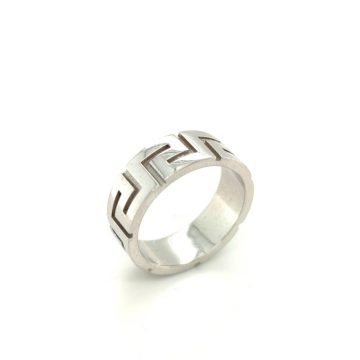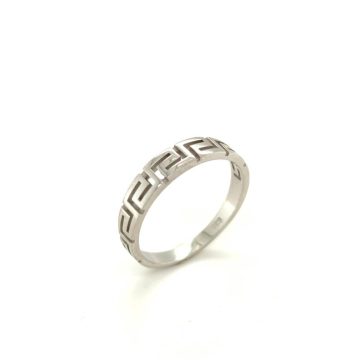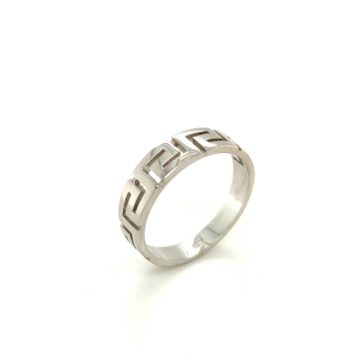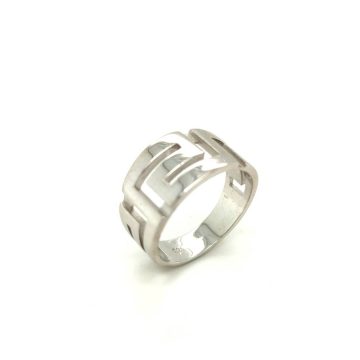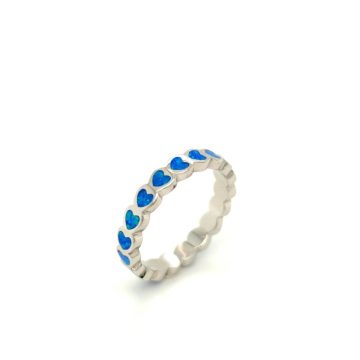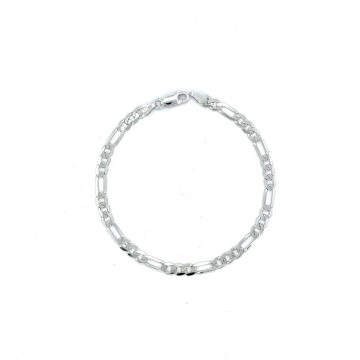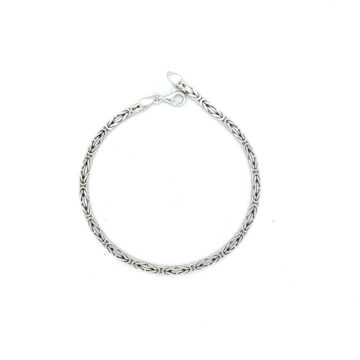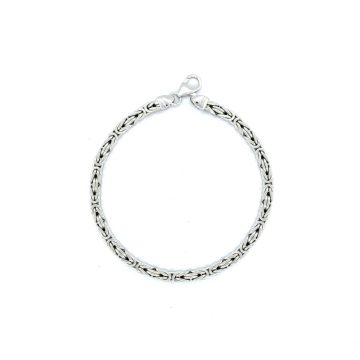Women’s ring, silver (925°) rhodium-plated, Meander
Women’s ring made of rhodium-plated silver (925 °) with Meander symbol. Meander is the most ancient Greek symbol, Victory and Unity, a symbol of Infinity and Eternal Life. Inspired, in the opinion of some academics, by the numerous turns of the river Meander. Meander is used in pottery, temples, monuments, sculptures, objects, weapons, armor and …
Women’s ring, silver (925°) rhodium-plated, Meander
Women’s ring made of rhodium-plated silver (925 °) with Meander symbol. Meander is the most ancient Greek symbol, Victory and Unity, a symbol of Infinity and Eternal Life. Inspired, in the opinion of some academics, by the numerous turns of the river Meander. Meander is used in pottery, temples, monuments, sculptures, objects, weapons, armor and …
Women’s ring degrade, silver (925°) rhodium-plated, Meander
Women’s ring degrade made of rhodium-plated silver (925 °) with Meander symbol. Meander is the most ancient Greek symbol, Victory and Unity, a symbol of Infinity and Eternal Life. Inspired, in the opinion of some academics, by the numerous turns of the river Meander. Meander is used in pottery, temples, monuments, sculptures, objects, weapons, armor …
Women’s ring degrade, silver (925°) rhodium-plated, Meander
Women’s ring degrade made of rhodium-plated silver (925 °) with Meander symbol. Meander is the most ancient Greek symbol, Victory and Unity, a symbol of Infinity and Eternal Life. Inspired, in the opinion of some academics, by the numerous turns of the river Meander. Meander is used in pottery, temples, monuments, sculptures, objects, weapons, armor …
Women’s ring degrade, silver (925°) rhodium-plated, Meander
Women’s ring degrade made of rhodium-plated silver (925 °) with Meander symbol. Meander is the most ancient Greek symbol, Victory and Unity, a symbol of Infinity and Eternal Life. Inspired, in the opinion of some academics, by the numerous turns of the river Meander. Meander is used in pottery, temples, monuments, sculptures, objects, weapons, armor …
Women’s ring degrade, silver (925°) rhodium-plated, Meander
Women’s ring degrade made of rhodium-plated silver (925 °) with Meander symbol. Meander is the most ancient Greek symbol, Victory and Unity, a symbol of Infinity and Eternal Life. Inspired, in the opinion of some academics, by the numerous turns of the river Meander. Meander is used in pottery, temples, monuments, sculptures, objects, weapons, armor …
Women’s ring degrade, silver (925°) rhodium-plated, Meander
Women’s ring degrade made of rhodium-plated silver (925 °) with Meander symbol. Meander is the most ancient Greek symbol, Victory and Unity, a symbol of Infinity and Eternal Life. Inspired, in the opinion of some academics, by the numerous turns of the river Meander. Meander is used in pottery, temples, monuments, sculptures, objects, weapons, armor …
Women’s ring, silver (925°) rhodium-plated, hearts with artificial opal
Women’s ring made of rhodium-plated silver (925°) with hearts and artificial opal.
Women’s ring, silver (925°) rhodium-plated, Olive Tree leaves with artificial opal
Women’s ring made of rhodium-plated silver (925°) with olive leaves and artificial opal. The olive tree for the ancient Greeks was a symbol of the Olympic ideals of Peace, Wisdom and Victory. That’s why the only award the Olympic champion received was a wreath made of an olive branch, the “kotinos”.
Men’s figaro bracelet chain 4,8 mm, rhodium-plated silver (925°)
Men’s figaro bracelet chain made of rhodium-plated silver (925°).
Men’s byzantina bracelet chain 2,5mm, rhodium-plated silver (925°)
Men’s byzantina bracelet chain made of rhodium-plated silver (925°).
Men’s byzantina bracelet chain 3,2 mm, rhodium-plated silver (925°)
Men’s byzantina bracelet chain made of rhodium-plated silver (925°).


